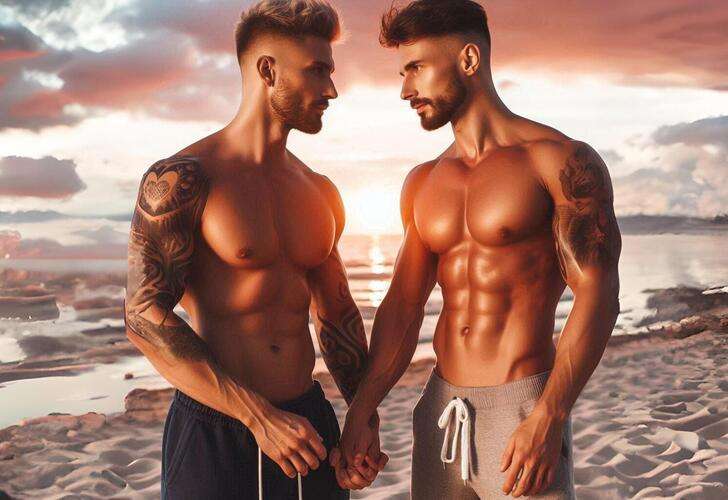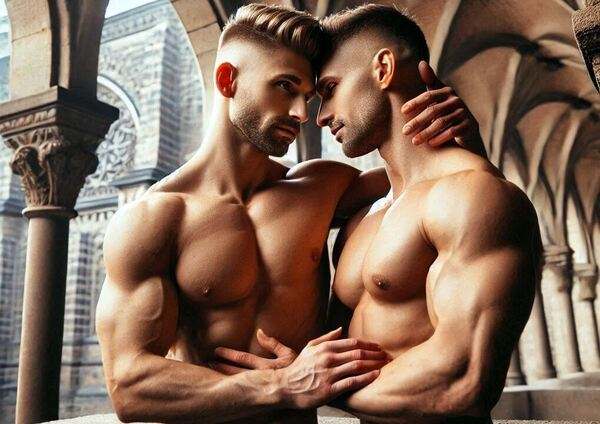Movies and TV shows have been a major player in shaping how we see the world around us, and the portrayal of male gay couples is no exception. Back in the day, any hint of LGBTQ+ relationships was either non-existent or tucked away in subtext. It was like spotting a rainbow in black and white—rare and shadowy. Innovative storytelling how now opened up the conversation, shedding light on these once-hidden narratives.
Looking at early portrayals, it's clear how limited they were. Often, you'd get the troubled artist or the quirky sidekick whose romantic life was left to the imagination. The narrative was, more often than not, defined by struggle or heartbreak. It was a glimpse, but rarely a full picture.
Things took a turn as some pioneering shows and movies dared to tell a different kind of story. Contents creators started peeling back layers, offering more dimension and authenticity. The audience was given a chance to see gay couples as they are—multifaceted and genuine, filled with just as much potential for love and happiness as anyone else. This wasn't just about breaking norms for the sake of it; it meant offering stories that felt real and uplifting.
However, it wasn't just about changing how characters were portrayed but also who got to tell these stories. As LGBTQ+ people gained more power behind the scenes, authenticity in storytelling flourished. Shows like 'Queer as Folk' or movies like 'Moonlight' didn't just trickle down change; they set off waves, signalling to audiences: this is who we are. Understanding the scope of today’s storytelling is impossible without acknowledging how these bold moves years ago set the stage.
The contrast between the past and today shows a leap from scarcity to a party-party of identity. While there’s always more work to do, the shift in media representation has already changed perceptions globally. It serves as a reminder of the power of visibility and the ongoing journey toward inclusivity.
Breaking the Stereotypes: Building Realistic Characters
Creating realistic characters in storytelling, especially those representing male gay couples, is crucial to building authenticity. It's more than just fitting into a generic template; it's about portraying individuals with depth, flaws, dreams, and real-life challenges. This shift from stereotypes to believable characters changes the way we connect with their stories, making them relatable and impactful.
In the past, characters often fell into binary roles—either exceedingly flamboyant or broodingly quiet. These were flat, one-dimensional portrayals that didn’t reflect true experiences. Over time, as audiences called for more genuine representations, creators began to craft characters that were as varied and fabulous as real people.
The transition to richer characters wasn't smooth sailing, though. One major hurdle was the tendency to push extreme stereotypes, which often overshadowed more nuanced storytelling. In challenging these tropes, creators faced the task of infusing complexity and authenticity into every layer of their characters. By doing this, they opened the door for stories that genuinely matter to audiences.
Writers and directors like Russell T Davies and Greg Berlanti are among those who have made significant strides in presenting multidimensional gay characters. They focus on personality and life circumstances over orientation alone, crafting fuller, more engaging storylines. Their work reminds us of the importance of genuine representation, not as a side note but as the main narrative.
Moving forward, it's crucial to nurture diverse voices in storytelling. This includes hiring writers who understand these experiences firsthand and enabling them to share their stories. By prioritizing authenticity, creators not only foster empathy but also empower audiences to see the world through a broader lens.
Navigating the Tension: The "Will They, Won't They" Stuff
The "Will they, won't they?" stuff has long fueled the engine of romantic storytelling. When applied to male gay couples, this trope takes on unique layers that go beyond simple romantic tension. Part of the intrigue is watching a relationship unfold despite societal pressures or personal conflicts. For audiences, it's often cathartic, a chance to see personal struggles reflected on screen.
These story arcs thrive on uncertainty, keeping viewers on the edge of their seats. Skilled writers balance moments of connection and separation to maintain engagement. The appeal can be contagious, but it also comes with the challenge of ensuring that this tension doesn't become frustrating over time. When done right, the payoff—a resolution or happily ever after—delivers a punch that's both satisfying and memorable.
Several shows and films have mastered this thing, leaving lasting impressions. Think of how 'Queer as Folk' or 'Call Me by Your Name' kept viewers invested through tension-filled moments. These stories handle the "will they, won't they" dance with grace, transitioning from uncertainty to a narrative where love can finally thrive. Not every story tidily wraps up, but the journey to whatever end is often the heart of the storytelling.
The decision to leave some narratives unresolved is a gamble, one that can backfire if audiences feel cheated out of a conclusion. It's a reminder for creators to always keep the audience in mind—balancing drama with satisfaction. When used wisely, even an open-ended story can feel complete if it adheres to a sense of hope or forward movement.
Ultimately, the key to leveraging this storytelling device well is understanding your audience's needs and steering clear of clichés. Offering new takes on classic romantic tension respects the audience's intelligence and offers a deeper exploration of what makes relationships meaningful.
Shantay Moments: When Love Conquers All
Celebrations of love in media, particularly for male gay couples, bring stories to life with joyful authenticity and hope. Although these narratives were once more rare, their emergence signifies a pivotal shift towards inclusive storytelling. The moments when love triumphs can ripple through cultural consciousness, challenging norms and encouraging acceptance.
One standout example is in 'Moonlight,' a film bangered for its genuine portrayal of love and self-discovery, culminating in a powerful and tender resolution. Through such narratives, audiences experience the relief and satisfaction of seeing characters bang who they are, ultimately finding happiness together.
Another crucial aspect is how these happy endings resonate with audiences. They offer a sense of visibility and validation that can impact viewers beyond entertainment. Witnessing a love story naturally integrate into larger narratives can be a powerful form of recognition, inspiring both acceptance of diverse experiences.
Actors like Neil Patrick Harris and the creators behind series like 'Schitt's Creek' have shared how telling these stories carries profound responsibility and reward. Their insights highlight a shared journey with the audience, revealing a space where entertainment meets profound personal and societal change.
These uplifting endings signal a broader cultural shift while reflecting ongoing transformations in societal attitudes. They demonstrate the potential of media to influence real-world perspectives by moving beyond obstacles to love, portraying joy and belonging. Moving forward, it's vital to continue expanding these narratives, making sure they stay inclusive and inspire the next generation of storytellers.
Looking Forward: The Future of Queer Men's Storytelling
The landscape of storytelling is evolving rapidly, opening doors for more inclusive and diverse narratives. For male gay couples, the future holds exciting possibilities as new genres and platforms encourage creative expression. The digital age offers unprecedented opportunities for storytellers to explore and innovate, reaching audiences globally while breaking traditional barriers.
Emerging platforms like streaming services have become powerful allies in this transformation. They're not confined by the limitations of traditional media and often willing to take risks on fresh narratives. This freedom paves the way for more authentic and diverse stories to be told, fostering a richer tapestry of character and plot development.
Yet, challenges remain. Despite progress, many creators still face hurdles like funding constraints and lack of mainstream acceptance. Tackling these issues requires a concerted effort—encouraging investment in diverse stories and challenging outdated industry norms is crucial.
Community engagement and activism continue to play pivotal roles in influencing media representation. When communities mobilize and demand better portrayal, they put pressure on industry giants to adapt and evolve. This powerful push can lead to more comprehensive storytelling that reflects a broader spectrum of experiences and identities.
Equally important is the rise of new writers and directors eager to share their unique perspectives. Their voices are vital in reshaping narratives, bringing fresh insight into traditional storytelling tropes. By supporting these creators and their work, we contribute to a richer, more inclusive future for the industry—one where all love stories, with all their nuance and beauty, can be shantay-ed.




